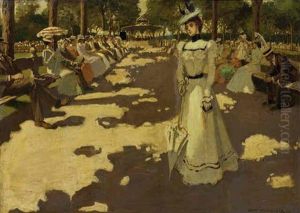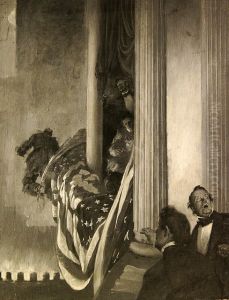Jay Hambidge Paintings
Jay Hambidge was an American artist and theorist who made significant contributions to the field of art in the late 19th and early 20th centuries. Born on January 2, 1867, in Canada, Hambidge moved to the United States where he pursued his passion for art. He is best known for his development of the theory of dynamic symmetry, a mathematical approach to design and composition in visual arts that was inspired by his study of Greek art and architecture. Hambidge's work as an illustrator and painter gained him recognition, but it was his theoretical contributions that left a lasting impact on the art and design world.
Hambidge's interest in the proportional systems used by the ancient Greeks led him to formulate the concept of dynamic symmetry, which he believed was a key to understanding the beauty and harmony found in Greek art. His theory proposed that certain geometric relationships, based on the golden ratio and other mathematical proportions, could be used to achieve a dynamic balance in artistic compositions. Hambidge published several books on the subject, including 'The Elements of Dynamic Symmetry' and 'Dynamic Symmetry: The Greek Vase,' which influenced artists, architects, and designers seeking to incorporate these principles into their work.
Despite the initial skepticism from some contemporaries, Hambidge's ideas found a receptive audience among those looking for a scientific basis to artistic creation. He lectured extensively on dynamic symmetry and conducted workshops to teach his methods. His influence extended beyond his lifetime, impacting the work of notable artists and architects, including Le Corbusier and George Howe, who applied dynamic symmetry in their designs. Hambidge continued to explore and refine his theories until his death on January 13, 1924. Today, Jay Hambidge is remembered not only for his artistic output but also for his role in integrating mathematical concepts into the understanding and teaching of art and design principles.





